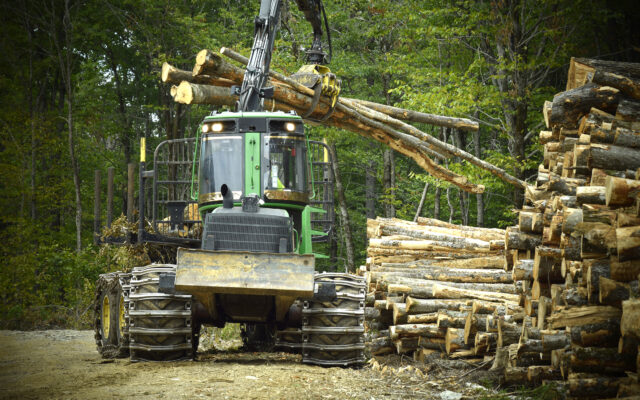
Construction prices have skyrocketed but don’t blame Maine loggers and landowners
By Dana Doran
In late February, the National Association of Home Builders reported lumber prices in this country had skyrocketed more than 180 percent since April of 2020.
Demand for building products is through the roof as folks are not traveling and are putting money into home renovation. Prices have shot up and many here in Maine may think everyone in the forest products industry is profiting as a result.
It’s not just retail prices that are at an all-time high. Wholesale prices are as well. As I write this, lumber is at $1,180 per thousand board feet.
What’s not at an all-time high? Prices paid to loggers, truckers and landowners for the harvesting, delivery and stumpage costs of the fiber that goes into these products.
While prices have gone through the roof (pun intended) for every building product under the sun, nearly all Maine loggers and landowners who supply raw materials for this boom have spent the last year making less money, not more. Simply put, loggers and woodland owners are not the reason why materials at your local building supply store have tripled in price.
Usually, price increases are explainable. Building material markets ebb and flow. For the manufacturer, they have hills, and they have valleys. On the hills, they make money that can help when they hit the valleys. This is business for anyone and is certainly understandable and explainable. However, something is different right now as this price change and lack of pass through the chain is not applicable to every commodity.
In a recent Wall St. Journal article, the author did a deep dive on the trend, focusing on one building construction commodity — lumber. The author found that retailers, wholesalers and manufacturers are being paid a premium for their products, but none of that price difference is being passed along the supply chain. I found this to be quite interesting as it focused specifically on landowners in the southeastern United States, but I can also confirm that it is the same situation here in Maine.
The day after then President Donald Trump signed the coronavirus assistance legislation in late 2020, which included a historic first-ever $200 million in relief for timber harvesters and haulers, I received a call from a wood buyer looking for information on when that aid would be available and how much would trickle into Maine.
This call didn’t come from a good friend, and I could tell this person was looking for information on how much money contractors might receive. Why? Because in the eyes of some wood buyers, every dollar of aid a contractor receives is a dollar they can now afford to lose when they sell their wood — a savings in other words. I was infuriated by the call.
As one of our board members likes to say frequently when it comes to any legitimate advantage or savings that is given to contractors, “where the Lord giveth, the Lord taketh away. Regardless of what the government might give you in tax relief, dealers might give you for rebates, or if fuel prices might drop, the people we work for will always find a way to take it from you.”
Our organization does not speak for landowners, but I can tell you that the past year, due to COVID-19 and the Jay mill explosion, has been the toughest that both landowners and loggers have seen in living memory. In the last two weeks, I’ve heard from four contractors who are leaving the business altogether. The next six months are going to be very telling as relief dries up and debt continues to build if markets and pricing don’t move in a different trajectory.
So, when you visit your local hardware store or even think about having your woodlot harvested, make sure you don’t lump the local logger or fellow woodland owner into your frustration with building material prices. Think more about how they contribute to this state and know that they are not the ones taking more of your money out of your pocket.
Doran is the executive director of the Professional Logging Contractors of Maine.